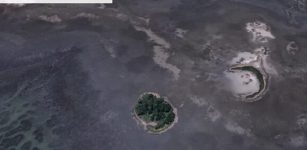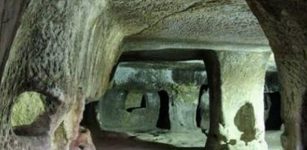Mysterious Golden Lords Of Panama
MessageToEagle.com – Our fascination with golden objects dates back to ancient times but gold has often very dark and gruesome history accompanied with lost life of innocent people.
Not long ago, numerous artifacts of gold and precious stones, indicating the existence of a previously unknown civilization were discovered in the town of El Caño in Panama.
This amazing find is considered one of the most significant discoveries of the last century and similar to that of Sitio Conte site, also in central Panama, located only two miles (three kilometers) from Sitio Conte.
The discovery provides a major proof of the golden-chiefs culture, which can be traced from about A.D. 250 to the 16th century, when Spanish conquerors arrived on the scene.
According to early Spanish accounts, only paramount chiefs had the right to wear certain types of gold ornaments, such as the breastplate.
These people had supernatural power as well as political authority.
Early Spanish sources indicate that gold plaques and other gold adornments were worn to war and to the grave.
According to researchers, El Caño people are “best regarded as a separate and distinct (though unnamed) culture that flourished in central Panama.
However, in ancient tombs hidden in the jungle of Panama there is much more than only gold.

A few years ago, archaeologist Julia Mayo of the Smithsonian Tropical Research Institute began to reinvestigate the area covered by ancient stone monoliths and mysterious sculptures, and popular among treasure hunters especially in the early 20th century.
During excavations in early 2011, archaeologists discovered the burial of a senior man. The grave had several levels and was closed with a wooden roof. Together with this man were also buried another 25 people whose bodies were stacked neatly.
Researchers found children’s golden outfit, perhaps intended for the son of the ruler, small gold plates, bracelets, earrings and a necklace of semiprecious stones. At the bottom of the grave, scientists have found the remains of 15 people whose bodies serve as a base. These people could be the captured soldiers or slaves who were sacrificed or committed suicide.
“Near the bodies was found a vessel filled poisonous fish bones Guentheridia Formosa. Another interesting detail: the remains of people covered ceramic plates, the purpose of which is not entirely clear,” reported National Geographic.
There is an ancient myth found among the Chibcha, also called Muisca, and their modern descendants, the Cueva Indians in the eastern part of Panama. According to the myth, the Chibcha had extraordinary skills that are unknown today and also extraordinary powers of working gold forming it to gold helmets, beautiful filigree gold chains and other precious ornaments representing men with animal heads, bats, frogs, spiders and eagles.
These artifacts remain a fascinating legacy of the Cueva Indians.
Copyright © MessageToEagle.com. All rights reserved. This material may not be published, broadcast, rewritten or redistributed in whole or part without the express written permission of MessageToEagle.com.













